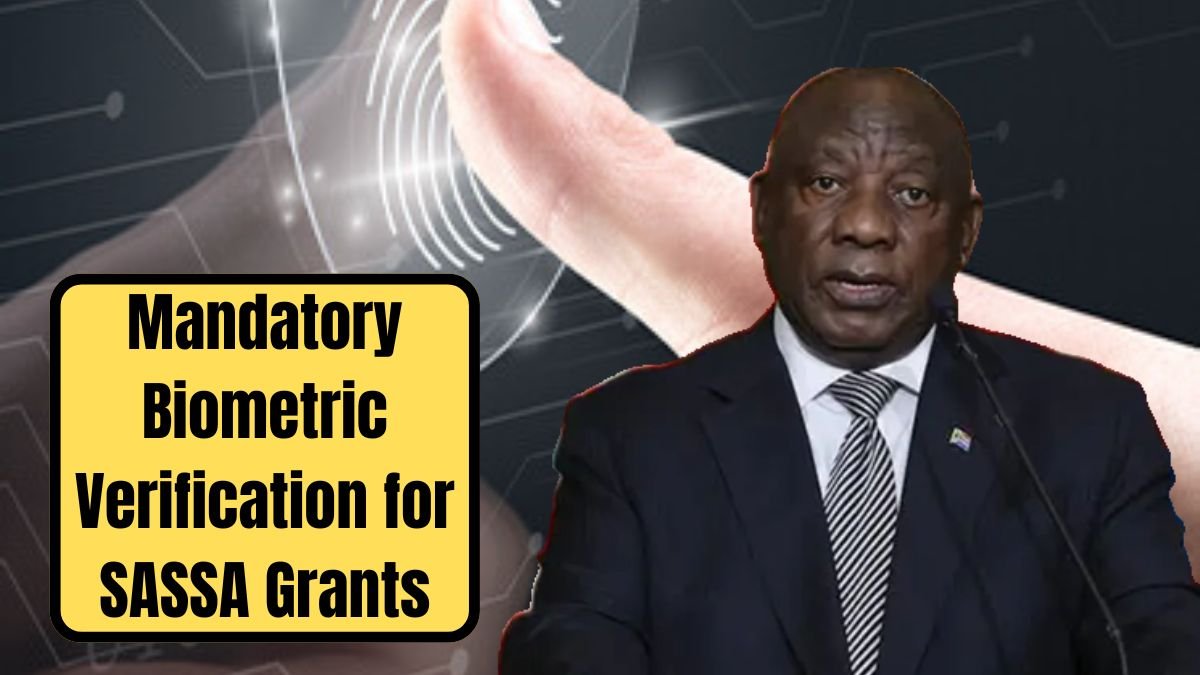This has made it possible to enforce biometric identification as a compulsory way of identifying social grant recipients. Following the 1st of September 2025, the use of biometric verification by the South African Social Security Agency will ensure additional security over this 250 billion rand social assistance program while preventing fraud. The law basically provided the availability of fingerprint and facial recognition technology to try and calm down the fears of fraudulent claims paid out under social grants. Key elements of the program are mentioned below.
Why Biometric Verification?
The new enrolment system being set by SASSA through biometric means is intended to address, among other things, long-standing issues of fraudulent applications, duplicate payments, and identities being abused. By means of unique biometrical markers such as fingerprinting or facial scans, the agency will verify that the beneficiary is the one intended to receive grants and further will remain as “proof of life,” thereby reducing to the lowest possibilities any error coming from forged identity documents. This will also fasten up processes and make it extremely difficult to defraud the system while enhancing audit measures further.
Who Is Affected?
The mandatory presence of biometric enrolment is on the smaller side for certain classes of SASSA clients:
- Appliants new in the system: Biometric registration shall accompany all applications for grants after September 2025.
- The existing beneficiaries: Biometric data will be required upon routine eligibility reviews or the usage changes in personal details such as a cellphone number or banking information.
- Special cases: Beneficiaries that use any form of identification other than the 13-digit South African ID, or whose financial situations are under review, shall comply.
About 210,000 beneficiaries are at the limbo stage for final payment, which shows verification must strongly take place in the SASSA domain to avoid fraud.
How Will It Work?
By 1 September 2025, every SASSA office in the country will be furnished with installation of biometric enrolment system. These shall expedite grant applications through fingerprint enrolment or facial recognition under eKYC systems. Any application in which biometric data is submitted shall be put under review and the beneficiary notified to complete payments. As an upgrade, the biometric system intends to place the system beyond manipulation, with specific reference to forged cases of the green identified document, which the frontline officials could use some help in detecting.
Features of the New System
Some features the biometric system will tend to bring about include the following:
- Reduced fraud: Upon beneficiary verification, SASSA anticipates a marked reduction in unlawful claims and double payments.
- Efficiency: Less documentation on the back end shall also smooth grant application and grant review.
- Public Confidence: A more secure system will instill a layer of confidence among the paying public in SASSA’s administration of social grants.
- Better Record-Keeping: By virtue of being biometric, records have to be most exact, along with audit results.
According to Themba Matlou, CEO of SASSA, this rollout is said to usher in “a new digital era” for the agency and helps safeguard the social assistance program.
Challenges and Considerations
This may present quite a challenge for certain beneficiaries when visiting SASSA offices or getting themselves acquainted with their new biometric requirements. The agency must properly communicate and support these beneficiaries, especially concerning those located in rural areas or the elderly. However, any step taken towards this inescapable dilemma is a step toward a safer and more effective social grant distribution system.
Challenges and Considerations
There may be some beneficiaries facing difficulties when going to SASSA offices or simply trying to get an understanding of their new biometric requirements. The agency must have proper communication and support systems in place; especially with regard to rural or elderly recipients. Such steps toward this inescapable dilemma are a step toward a safer, more effective way of distributing social grants.
also read : NSFAS Allowance September 2025: How to Receive Your R5,200 Quickly
